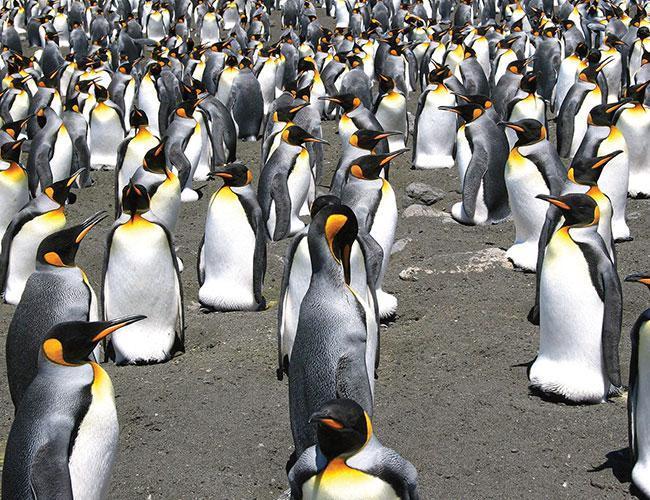
Human activity has driven animals and plants into decline in every region of the world, putting our own well-being at risk by over-harvesting and polluting, a comprehensive species survey warned on March 23.
Asia-Pacific fish stocks may run out by 2048 and more than half of Africa’s bird and mammal species could be lost by 2100 unless drastic measures are taken, according to four comprehensive reports released at a major environmental conference in Medellin, Colombia.
Up to 90 percent of Asia-Pacific corals will suffer “severe degradation” by 2050, while in Europe and Central Asia, almost a third of known marine fish populations, and 42 percent of land animals and plants, are in decline.

In the Americas, just under a quarter of species assessed are at risk of extinction.
“This alarming trend endangers economies, livelihoods, food security and the quality of life of people everywhere,” warned the Intergovernmental Science-Policy Platform on Biodiversity and Ecosystem Services (IPBES).
Compiled by nearly 600 scientists over three years, the reports underline that nature provides humans with food, clean water, energy, and regulates Earth’s climate -- just about everything we need to survive and thrive.
One of the reports found that Nature’s contribution to people can be in the order of thousands of dollars per hectare per year.
“We’re undermining our own future well-being,” IPBES chairman Robert Watson said of the findings.
“Biodiversity continues to be lost across all of the regions of the globe. We’re losing species, we’re degrading ecosystems... if we continue ‘business as usual’, we will continue to lose biodiversity at increasing rates.”
The IPBES assessment divided the world into four regions: the Americas, Africa, Asia-Pacific, and Europe and Central Asia -- the whole planet except for the Antarctic and the open seas.
Volunteer scientists combed through some 10,000 scientific publications for the most extensive biodiversity survey since 2005.
The findings were summarized in four reports approved by 129-member IPBES’ member countries in Colombia. They contain guidelines for governments to make biodiversity-friendlier policies in future.
The texts make for grim reading, and come in the same week that the death of Sudan -- the world’s last northern white rhino male -- served as a stark reminder of the stakes.
For the Americas, the survey warned that species populations -- already 31 percent smaller than when the first European settlers arrived -- will have shrunk by about 40 percent by 2050.
An estimated 500,000 square kilometers of African land is estimated to be degraded, it added.
 The continent will suffer “significant” plant losses, and its lakes will be 20-30 percent less productive by 2100.
The continent will suffer “significant” plant losses, and its lakes will be 20-30 percent less productive by 2100.
In the European Union, meanwhile, only seven percent of marine species assessed had a “favorable conservation status”.
“If we continue the way we are... the sixth mass extinction, the first one ever caused by humans, will continue,” Watson old AFP.
Scientists say mankind’s voracious consumption of biodiversity has unleashed the first mass species die-off since the demise of the dinosaurs -- only the sixth on our planet in half-a-billion years.
In many places, climate change driven by burning fossil fuels for energy was worsening the loss of biodiversity, the reports found.
“Climate change for the last 30 years has been increasing its role in changing nature, changing the ability of how nature can contribute to human well-being, and it is by far the fastest-growing pressure,” said Jack Rice, a co-author of the Americas report.
“It is likely by 2050, a generation away, climate change will be as strong a pressure as all the ways that we have historically converted natural lands to human-dominated systems.”
There are plenty of hurdles ahead.
“Economic growth is going to continue. Population growth is going to continue to 2050, therefore demand for resources will grow,” said Watson.
Even at best-case-scenario levels, global warming will continue adding to species loss, which will cause further degradation of ecosystems.
But the scientists point to possible solutions: creating more protected areas, restoring degraded zones, and rethinking subsidies that promote unsustainable agriculture.
Governments, businesses, and individuals must consider the impact on biodiversity when taking decisions on farming, fishing, forestry, mining, or infrastructure development.
Different regions will require different solutions, said Watson.
“It’s not too late” to halt or even reverse some of the harm, he said.
“Can we stop all of it? No. Can we significantly slow it down? Yes,” Watson said.
The IPBES will bring out a fifth report on the global state of soil, fast being degraded through pollution, forest-destruction, mining, and unsustainable farming methods that deplete its nutrients.